Bière de garde is a malty style of beer that is undiscovered to many. Translated to “beer for keeping,” the style was traditionally brewed in Northern France. Comparable to a Belgian saison, this beer is known for its malt-focused, toasty taste, and slight sweetness.
Visually, it is clear to slightly hazy, and the color is light amber to chestnut brown or red, largely dependent on which variation it is: blond, brown, or amber. This malt-forward brew’s hop aroma, flavor, and bitterness are low to medium, often with a soft to mouth-coating body.
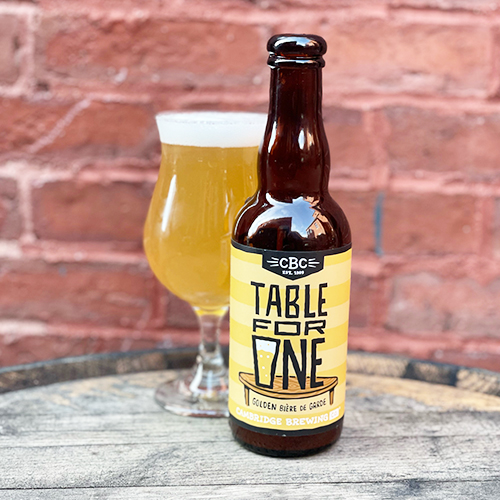
As Cambridge Brewing Company notes on its bière de garde description, the style is traditionally brewed in the Flanders region of France, bordering Belgium. The name is in reference to the practice of brewing a stronger beer in winter to store as provisions for the warmer months when it was more difficult to brew. The higher alcohol content (typically 6 to 8.5 percent) helped prevent spoilage during storage. Cambridge’s bière de garde, Table for One, is described as having a soft toasty, malty flavor while finishing exceptionally dry.
Cambridge brewmaster Will Meyers was introduced to bière de garde and saison in the early 90s and has always been drawn to the two styles. “In describing the style, it’s important to note that we are talking about the contemporary/modern idea of bière de garde as cleaner overall, using a monoculture yeast, with subtle yeast expression that only hints at ‘Belgian’ yeast character,” Meyers says, adding that historically, the style would have often seen (unintentional) mixed-culture expression from Brettanomyces and bacteria as well as some vinous character from age and oxidation. “Table for One is a ‘clean’ bière de garde as opposed to those we have produced in oak with mixed flora.”
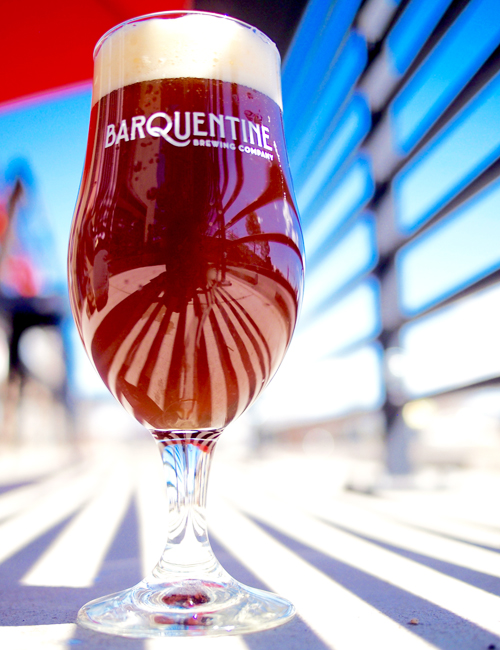
For the Barquentine Brewing bière de garde, Kyle Knudson leans a little more amber with the grain bill than some commercial examples to highlight how a perfectly-kilned Munich malt can be enhanced by a farmhouse yeast.
“It is a shame this style does not get the popularity it deserves,” says Knudson. “I believe it to be one of the perfect examples of what craft beer can be—aromatic with a round mouthfeel and an effervescent and quenching, dry finish.” Knudson explains that the beer was historically brewed in the French countryside during the winter and lagered for farm workers to drink during planting season. “Bière de garde is a perfect year-round beer because of the anomaly of a medium body with a crisp finish.”
When Boulevard Brewing’s Rob Odell, lead filterman, and Sterling Holman, senior brewer, were asked to brew a beer for the fall adventure pack, the immediate response was bière de garde. “Stylistically this is a beer that Boulevard has never brewed, and I am always up for the challenge of exploring more traditional beers that are overlooked or nearly forgotten,” Holman explained. “In this day of hop-forward beers, we felt that creating a nuanced malt-forward beer would be a breath of fresh air.”
Holman says a bière de garde is not dissimilar to a Kölsch or steam beer in that it is a hybrid beer. They used their house lager strain but fermented at a higher temperature. “Using a lager strain allows for a softer mouthfeel and really lets the layers of malt shine and work in harmony,” Holman said. Seven different malts were used in brewing the beer: Pilsener, pale, Munich, abbey, Vienna, amber, and chocolate rye.
“The idea is to create a full-flavored beer that is easy on the palate—not overly sweet but still malty,” Holman said, adding that one of Boulevard’s brewers described the beer as “a nice bread basket.”
For the Colorado Brewers Guild Collaboration Fest, Phantom Canyon Brewing and OCC Brewing in Colorado Springs teamed up to brew something that would be less common than other styles, would provide enough leeway to make it interesting, and would play to their own strengths and preferences for traditional Belgian beers as well as German lagers. Bière de garde was the winner.
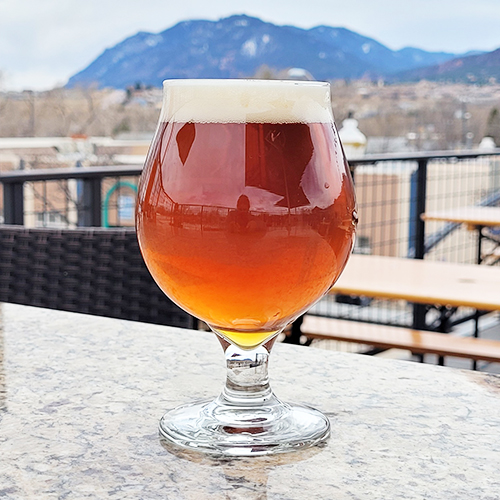
“Bière de garde combines the complex, rustic flavor profile Belgian beers are known for with sophisticated malt richness and strength of a beer meant to be kept for special occasions,” said Phantom Canyon head brewer Charles McManus. Bière de garde can be built from a multitude of different malts and hops and fermented at different temperatures depending on time of the year and where it was made, McManus explains.
OCC Brewing head brewer Kyle Stevens points out that it’s a style that is surprisingly loosely defined, and that most examples are essentially cleaner, lagered, restrained versions of your favorite malty Trappist ales. “They can range in color and maltiness from quite pale to quite dark, but they generally all feature a maltier-than-average body and yeasts with characteristic ‘Belgian’ fruity and spicy flavors but in a more subtle, balanced package than a warm-fermented monastic ale,” Stevens said.
Russian River Brewing Company’s Perdition is a play off of a bière de garde, referred to as bière de Sonoma. Owner and brewer Vinnie Cilurzo says the beer is a darker version of saison with more bread and biscuit notes and a malt-forward aroma and flavor. Offering a malt-forward beer is a boon for Russian River’s pubs, he says. “As a brewery with so many IPAs, sour/barrel beers, and a couple of lagers on at all times, having this one malt-forward beer makes it an easy suggestion for our team to make to guests who don’t want a hoppy beer.” In the Santa Rosa, Calif. location, it’s also the go-to beer for the pizza dough.
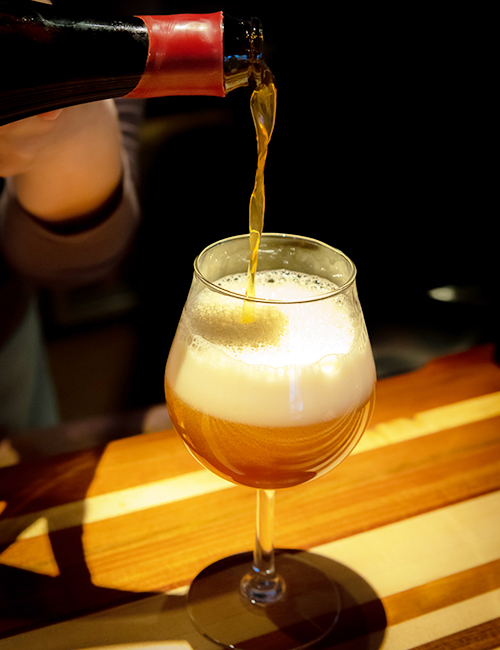
Hill Farmstead Brewery produced a related style, Biere de Mars, an amber farmstead ale brewed in celebration of spring, as well as Biere de Norma, aged in the same oak red wine barrels for more than 12 years. The barrel-aged beer was largely inspired by both Jolly Pumpkin Artisan Ales as well as Brasserie Theillier’s La Bavaisienne, with a taste of vinous dried fruit, toffee, and a touch of wine-like acidity.
Ponysaurus Brewing’s Bière de Garde is an homage to higher-gravity French farmhouse ales, reflecting the historical realities of the style, when brewers made do with what was on hand. The beer is brewed with three types of barley, wheat, rye, and oats.
Clutch Brewing Company’s Barnstomp is described as a clean but malty French-style ale with hints of toffee, biscuit, and toast with black currant. Bigelow Bière de Garde is a collaborative beer brewed with Humble Abode Brewing and YaYa Brewing.
Many other breweries appreciate the nuances of the bière de garde style, including Humble Monk Brewing, Two Brothers Brewing Co., The Lost Abbey, and Schlafly Beer.
CraftBeer.com is fully dedicated to small and independent U.S. breweries. We are published by the Brewers Association, the not-for-profit trade group dedicated to promoting and protecting America’s small and independent craft brewers. Stories and opinions shared on CraftBeer.com do not imply endorsement by or positions taken by the Brewers Association or its members.
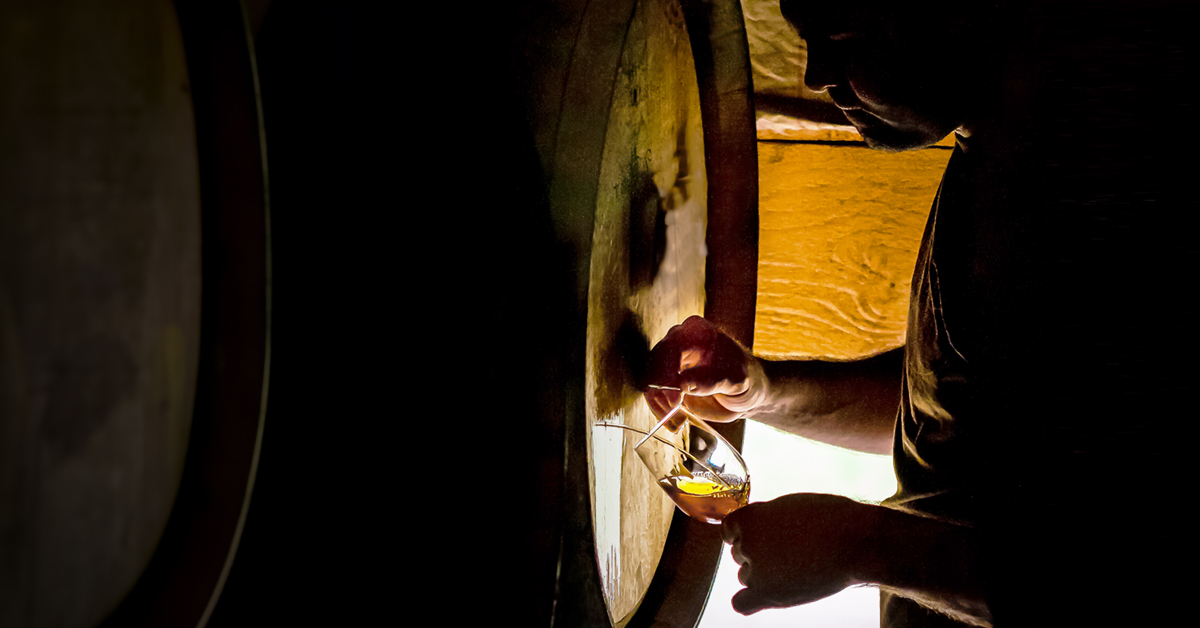

Share Post